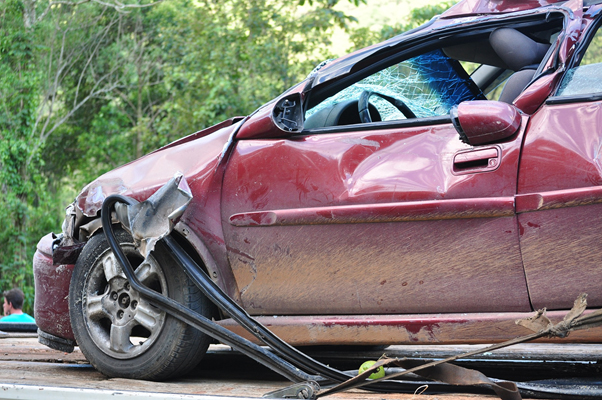

Sponsored Ads

Sponsored Ads

T-bone car accidents are the most common fatal car accidents in the United States.
That is because more than two-thirds of T-bone crashes occur at intersections, where drivers often fail to yield at a stop sign or red light. T-bone accidents tend to be more severe because of the tremendous force and direct impact when two vehicles collide head-on.
The likelihood of being killed in a T-bone accident is higher for the occupants of the car directly hit by the driver failing to yield. Nearly 50% of single-vehicle T-bone accidents involve a truck or large SUV colliding with a passenger vehicle. The SUV or truck involved in such an accident sustains damage on its front end. Moreover, T-bone accidents can cause spine injuries.
Things to Know about T-bone car accidents
1. A driver's side airbag will most likely not deploy in a head-on collision. If the driver is seriously injured, it may be because they do not have an airbag to protect them.
2. In most car accidents involving two cars facing each other head-on, the vehicles slide sideways at impact. It means that passengers in both cars usually sustain more injuries than drivers.
3. In 1979, automobile manufacturers had to install passenger airbags because of litigation resulting from T-bone accidents. Airbags are designed to inflate and pass the air to cushion the occupants.
4. When a car collides at high speed, the shock of the impact causes seat belts to break with greater force than colliding with a median barrier or objects like a tree or pole. It may cause head injuries like concussions.
5. Most T-bone accidents arise from an intersection, where most drivers fail to yield and follow too closely behind another car.
6. When a car turns left into the opposing traffic lane, most T-bone accidents involve a car hitting another while making a left turn. Only 10% involve a car changing lanes in the same direction.
7. Most T-bone accidents occur during daylight hours between 6 am and 6 pm.
8. In 2009, 7,690 people died in T-bone car accidents compared to 5,561 who died in single-vehicle crashes with no other vehicles involved in the accident or pedestrian deaths.
9. If a driver runs into the car ahead of them and that driver stops to let them pass, sometimes the car behind them will rear-end them.
10. When a car is hit from behind or runs into an object, the chances of its occupants sustaining fatal injuries are higher if they are not using their seatbelts.
11. If a driver facing you in another lane signals their intention to turn right, and you are traveling at speed, you should slow down gradually but not stop within 500 feet 152 meters of the intersection.
Sponsored Ads

Sponsored Ads

